The 10 essential elements of a Strategic Annual Product Review
by Leica Ison

Product management and governance is a complex and ever-evolving process. . Whether you're a startup or a multinational corporation, a strategic annual product review is an opportunity for product leaders to assess their product portfolio, performance, and progress towards achieving their goals.
The product review, also known as Lifecycle Assessment or Audit, should encompass a 360 degree view ie wide range of metrics and considerations to provide a comprehensive understanding of the product's success. Financial metrics are important however operational and non-financial metrics are also vital.
By adopting a 90 day product cycle or cadence where you regularly track and measure your product's success your can start to make data-driven decisions. An ideal cadence is annual product review with 90 day lite review. This will help you be more strategic, identify the early signals for areas for improvement and make informed decisions about future product development and governance risks.
Here are the ten things that should be included in a strategic annual product review:
- Revenue Metrics: This includes analyzing revenue generated by each product, revenue growth, market share, and any changes in demand. Include YOY or year-on-year growth against budget and forecast.
- Customer Metrics; This involves looking at customer satisfaction, loyalty, and feedback such as complaints, churn and cancellations. Understanding your customers' preferences and needs is critical to ensuring the success of your products.
- Margin Metrics: This includes an analysis of the cost of goods sold, gross margins, and operating margins. Understanding the financial performance of your products is essential in making informed decisions for profitable growth.
- Sustainability Metrics: This includes evaluating the environmental impact of your products and the extent to which they are sustainable and environmentally friendly.
- Regulatory Metrics: This involves ensuring that your products comply with relevant regulations, such as fair value, safety standards, data privacy, product governance and intellectual property rights.
- Innovation Metrics: This involves tracking the introduction of new products, product updates, and developing new technologies and features.
- Market Trends: This involves staying up-to-date with current market trends, competitors' offerings, and new technologies that may impact your products.
- Sales and Distribution Metrics: This involves analyzing the distribution channels for your products and their impact on sales and customer complaints.
- Marketing Metrics: This includes evaluating the effectiveness of your marketing campaigns' effectiveness and the return on investment for marketing efforts.
- Performance Metrics: This includes tracking key performance indicators, such as product life cycle, return on investment, and customer acquisition costs.
The Essential Strategic review or Lifecycle Assessment Live Example:
Let's consider a company that produces home insurance and how you can conduct your monitoring, product reviews and reporting in a digital tool for product managers.
The strategic annual product review for this Insurance product would include the following areas and the example in the Skyjed platform which offers a comprehensive solution for product teams, providing them with the tools they need to manage their product lifecycle, track performance, and ensure that their products are aligned with their governance and ESG goals.
- Annual Product Review: The annual reviews starts with a snapshot to brief management on product, pricing structure and annual strategy:
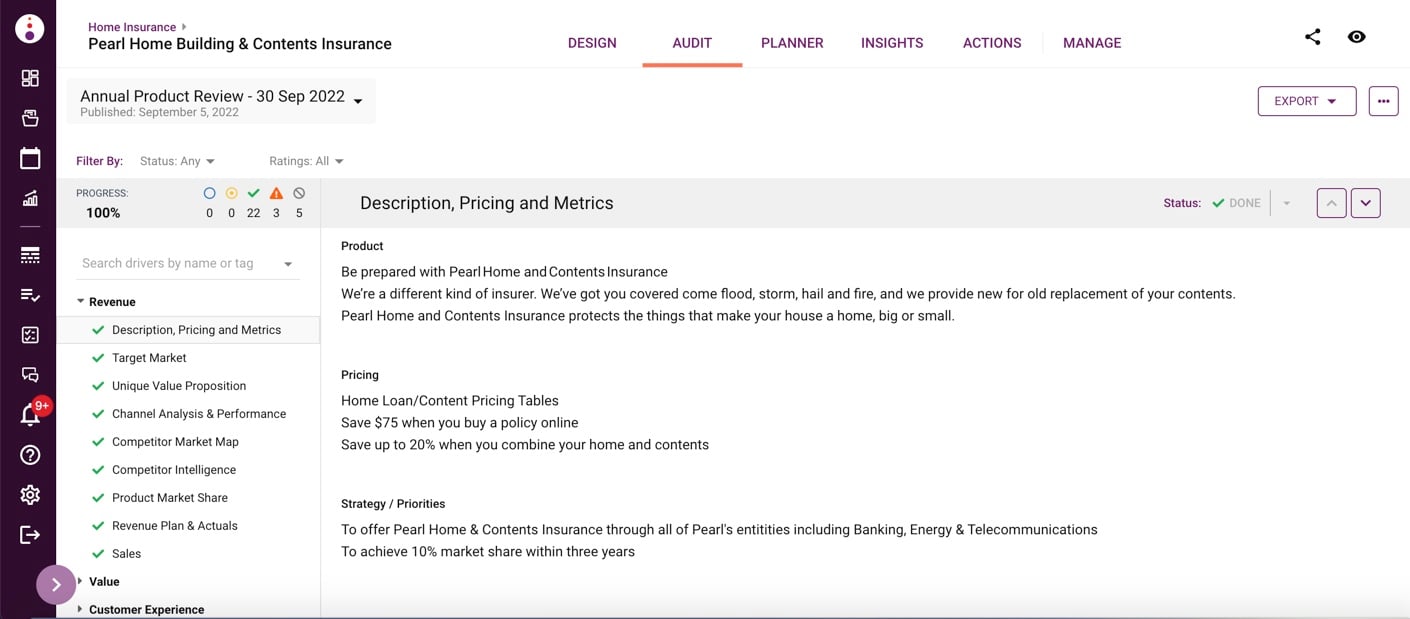
- Revenue Metrics: An analysis of the revenue generated by each product line by month and quarter, as well as revenue growth and changes in demand for insurance product.
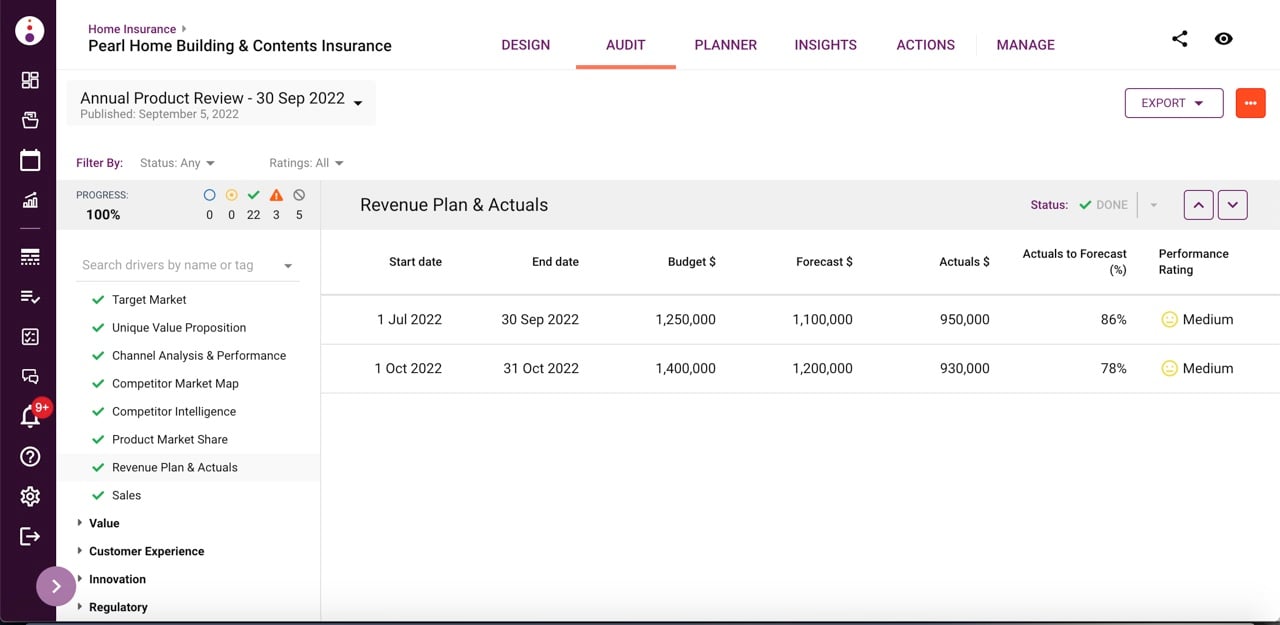
- Margin Metrics: An analysis of the cost of goods sold, gross margins, and operating margins to assess the financial performance of the company's products.
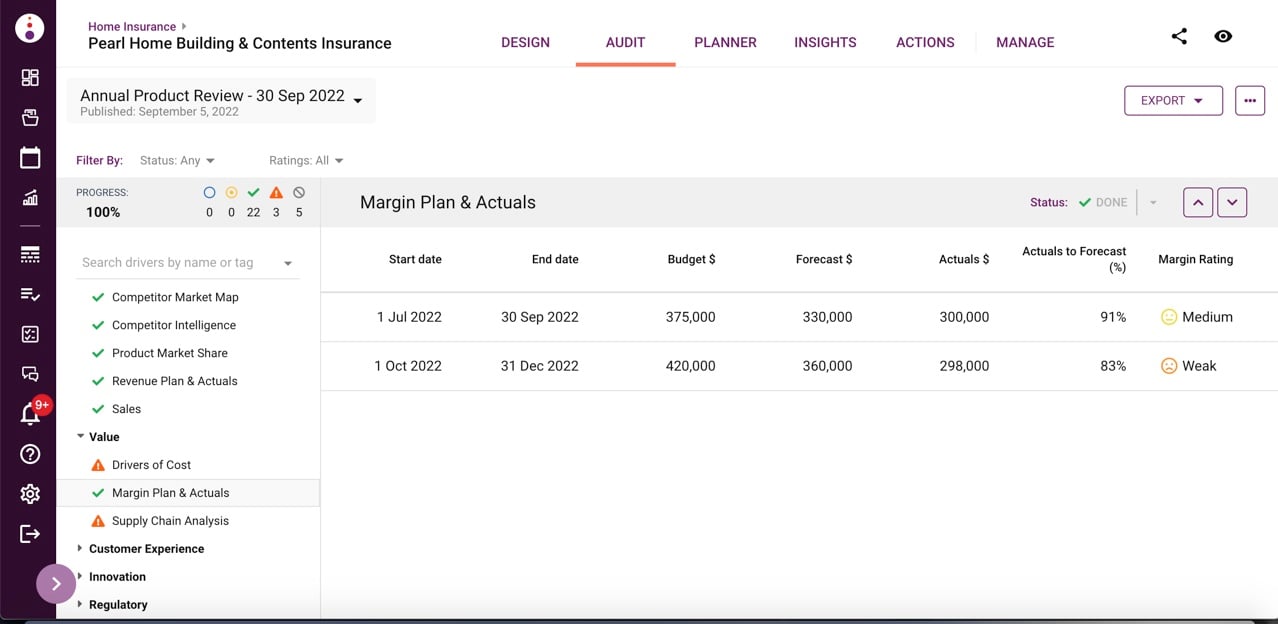
- Customer Metrics: A review of customer satisfaction, complaints, and the extent to which customers choose the company's insurance over competitors.
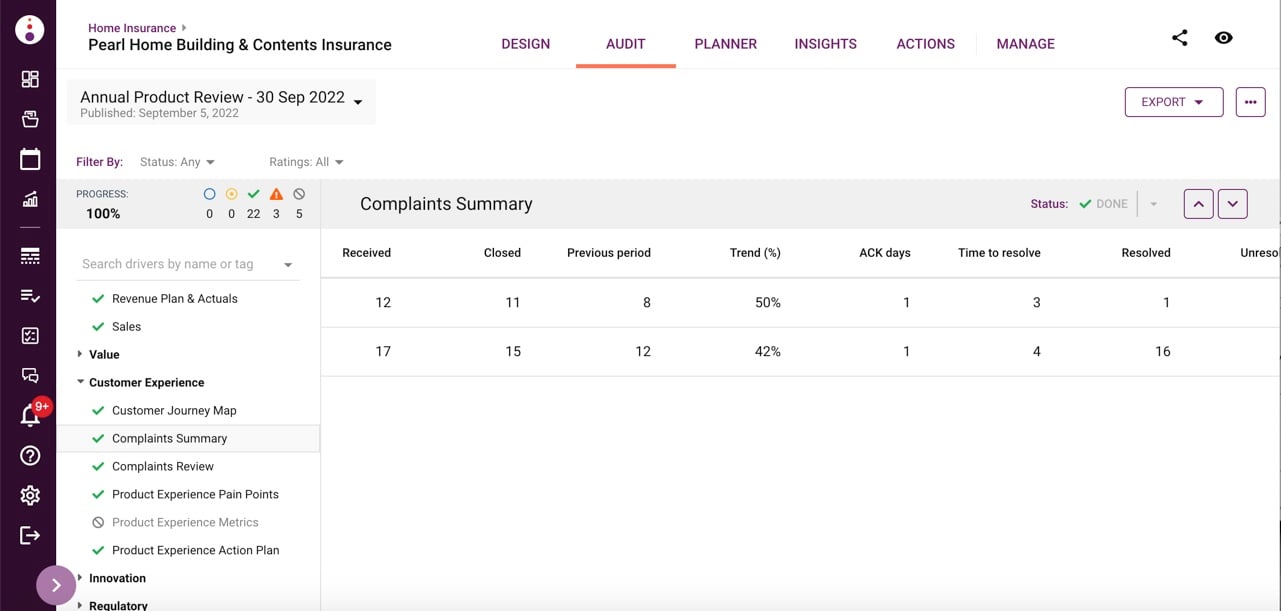
- Regulatory Metrics: An assessment of the company's compliance with relevant regulations, such as modern slavery, consumer duty, design and distribution obligations, safety standards and data privacy.
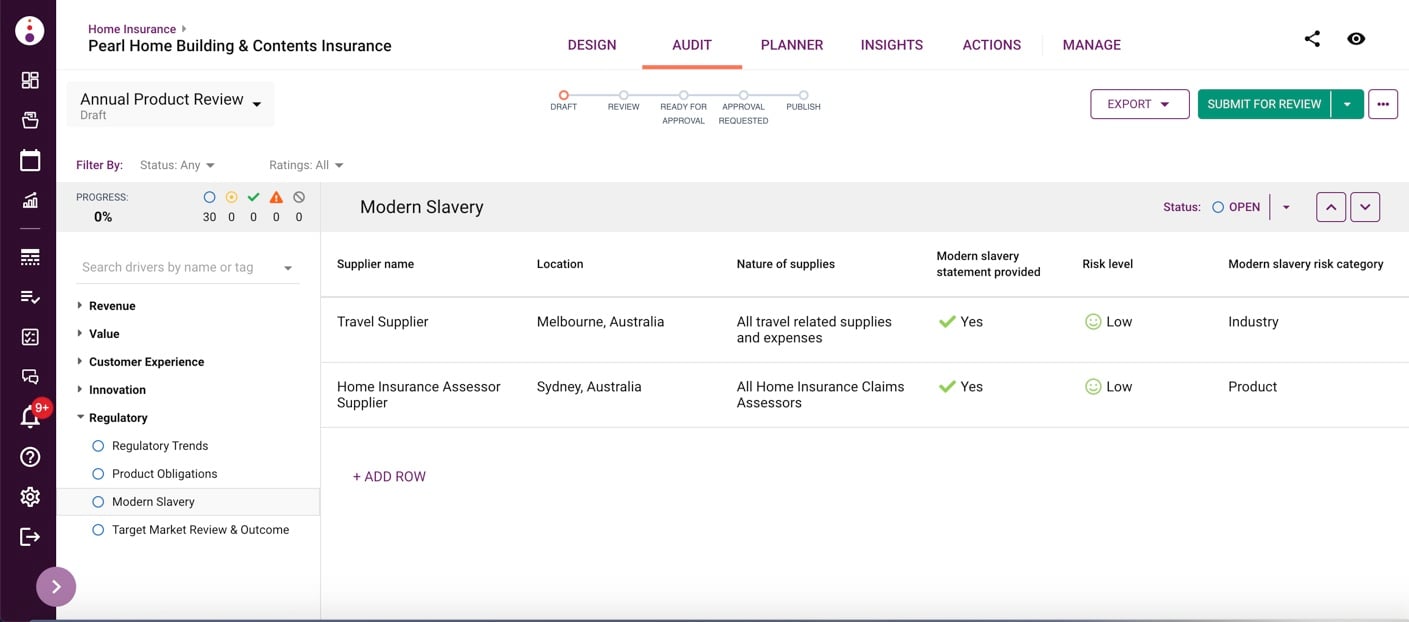
- Innovation Metrics: An evaluation of the company's efforts to introduce new products, update existing products, and develop new technologies and features.
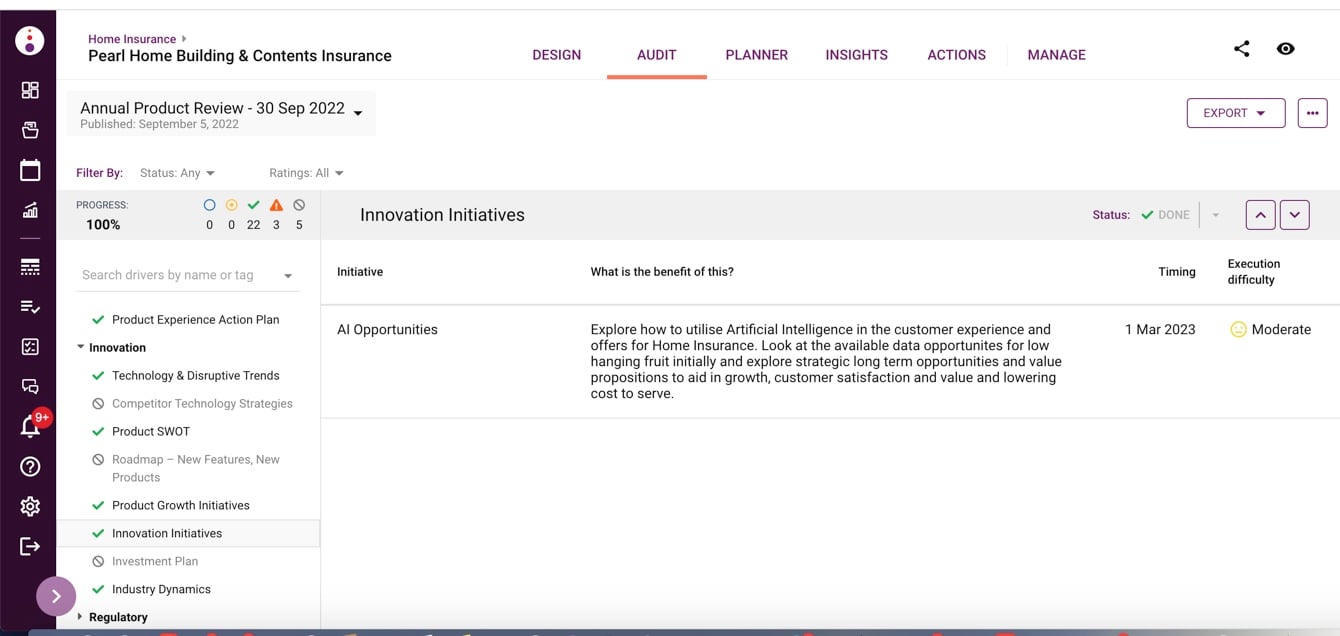
- Market Trends: A review of current market trends, including changes in demand for insurance and the offerings of competitors.
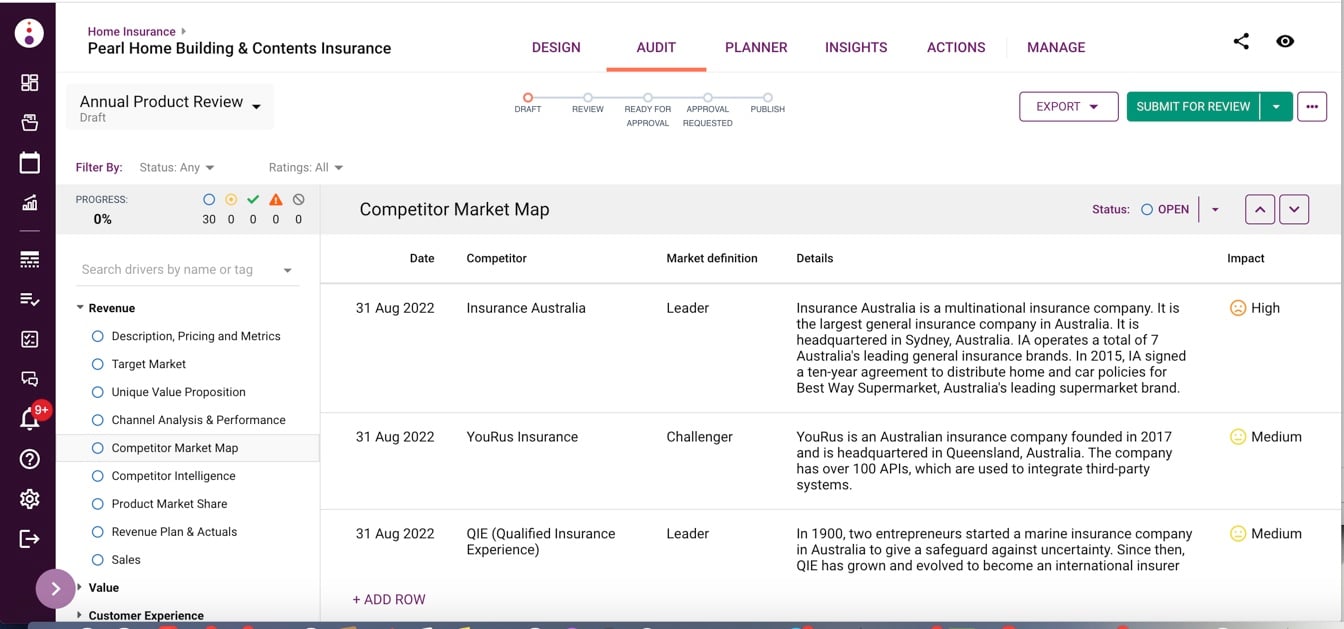
- Sales and Distribution Metrics: An analysis of the company's distribution channels and their impact on sales.
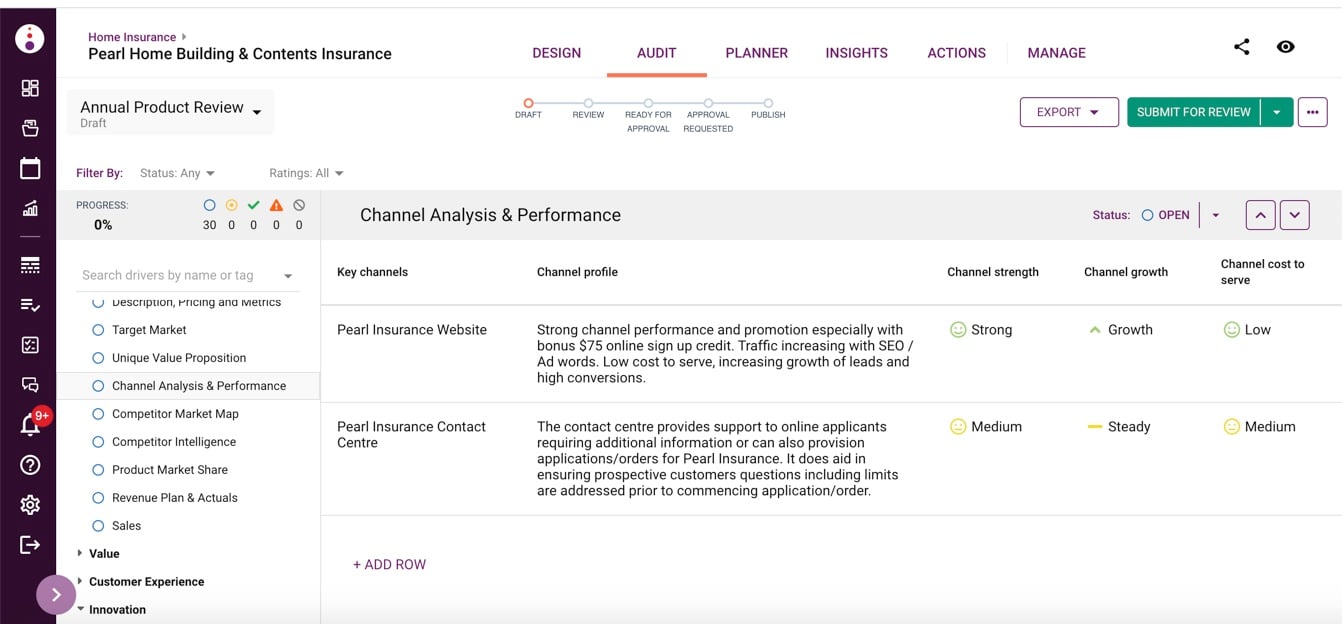
- Marketing Metrics: An evaluation of the effectiveness of marketing campaigns, including the return on investment for marketing efforts
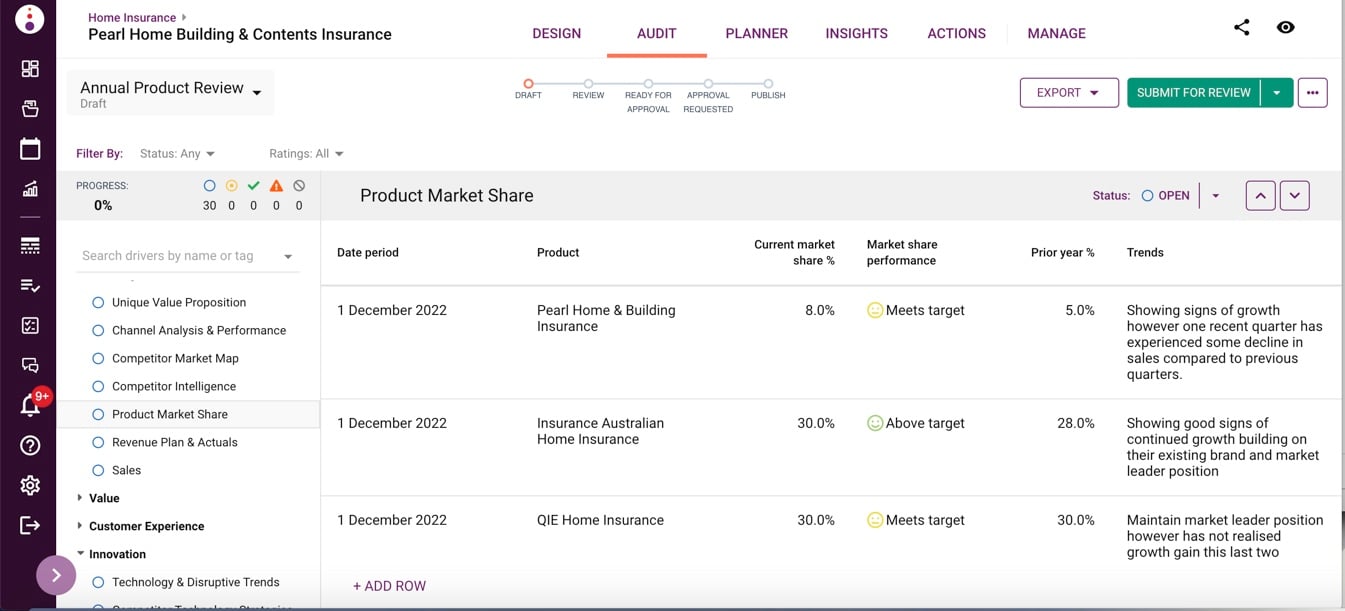
- Performance Metrics: An analysis of key performance indicators, such as product life cycle, return on investment, and customer acquisition costs.
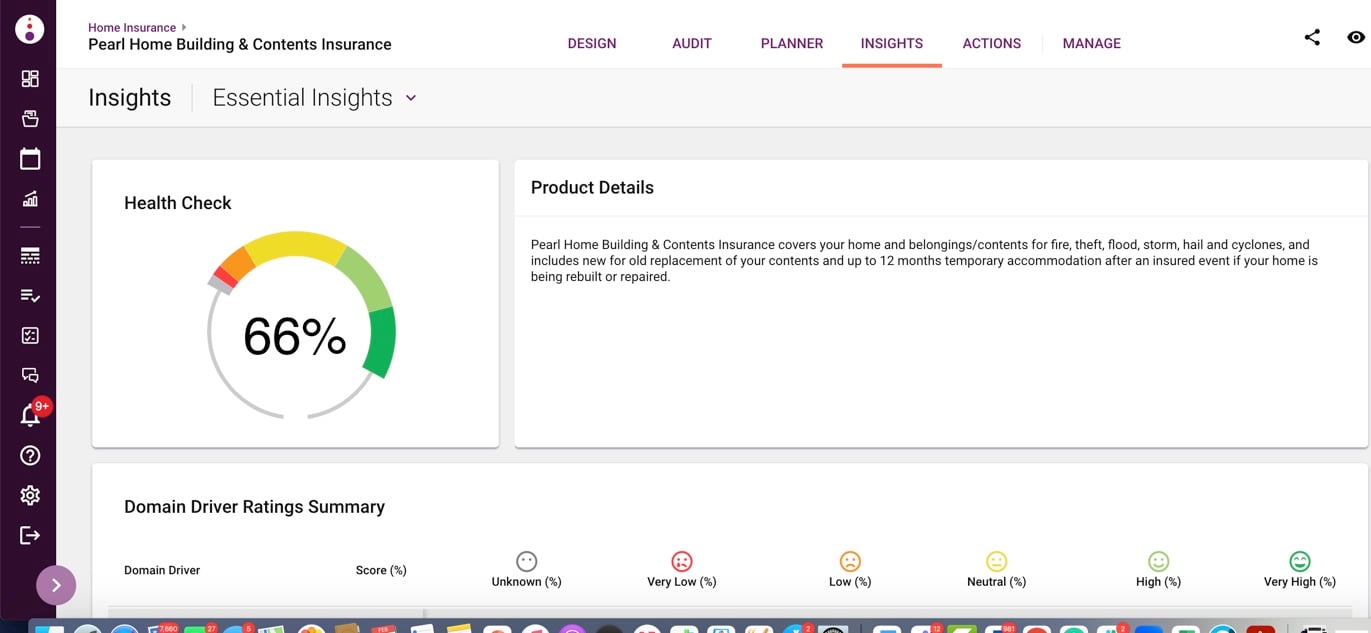
In conclusion, a strategic annual product review is an essential tool for companies to assess their product performance and progress towards achieving their goals. By incorporating these 10 essential elements, companies can gain a comprehensive understanding.
The Skyjed platform offers a comprehensive solution for product teams, providing them with the tools they need to manage their product lifecycle, track performance, and ensure that their products are aligned with their governance and ESG goals. With its intuitive interface and powerful analytics, Skyjed has made it easier than ever for product teams to stay on top of their product management and governance needs.
You can learn more about what is a product governance framework here.
About Skyjed
Skyjed is product lifecycle and governance platform. Skyjed’s Ai-powered end-to-end product platform bring together every data point across the entire product portfolio into a single source of product truth. Skyjed was founded in 2017 and is headquartered in London and offices in Sydney and Melbourne, Australia. For more information visit Skyjed



